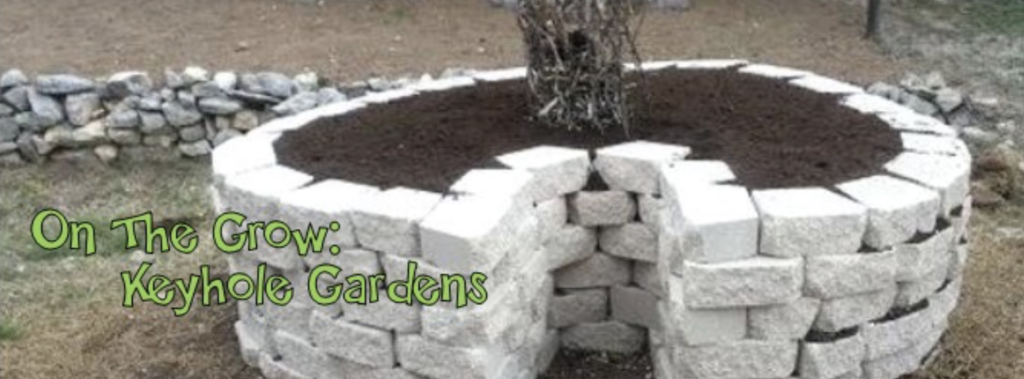 Keyhole Gardens by John Sanger, Hunt County Master Gardener.
Keyhole Gardens by John Sanger, Hunt County Master Gardener.
The keyhole garden was developed in sub-Saharan Africa to help people grow food in hot, dry conditions – much like we have here in Texas during the Summer months. It is very efficient at holding moisture and retaining nutrients. The keyhole garden is essentially a round raised bed garden built on a compost pile with a central compost basket. The keyhole is a small aisle on one side of the circular garden that enables the gardener to reach the compost basket to add to it or turn it. It also brings the gardener closer to the center of the bed to reach plants more easily. Keyhole gardens get their name from the appearance of the garden as viewed from above.
The keyhole garden can be made of anything that can contain the soil. The ideal size for maintaining moisture is about 6 feet in diameter. I like the garden walls to be about two feet tall, as I like to tend the garden from a standing position. People use wood beams, cinder blocks, stacked stones, fencing material, even wine bottles and concrete for their garden walls.
To build the garden, lay out a 6-foot diameter circle on the ground. Keep in mind that if you plan to angle your materials inward for strength, you may want to start with a wider base to allow for that angle so that the top of your garden is about 6 feet across. The central compost basket can be a 1-foot diameter cylinder of hardware cloth that will extend about one foot above the final soil level. On my gardens, a 48” wide roll of hardware cloth was the perfect height. Secure the basket with wire and cover the exterior with weed block, burlap, or other permeable fabric. Lay out where you want your keyhole and move your garden wall materials to create an aisle that will allow you to stand near the center of the bed to reach the compost basket.
The keyhole garden should be lined with wet cardboard, and then filled with alternating layers of brown and green compost. Browns include lots more cardboard and dry leaves, and greens can include green, leafy material or manure. Alternate layers until the bed is almost full, then top with a rich planting mix. Plant the bed densely so that the canopy of foliage will shade the soil and then add several inches of mulch around plantings. Put compostable materials into the compost basket regularly. When watering the plants, also water the compost basket so that the water will leach nutrients into the surrounding soil. During the hottest months, some gardeners build a frame so that shade cloth can be hung over the garden.
If you want to maximize crop output in your vegetable garden even during the hottest and driest months, try a keyhole garden. It is a versatile and efficient design which is easy to maintain and can provide a family with a year-round abundance of vegetables.
